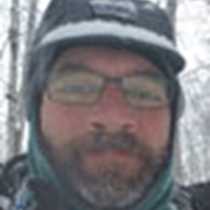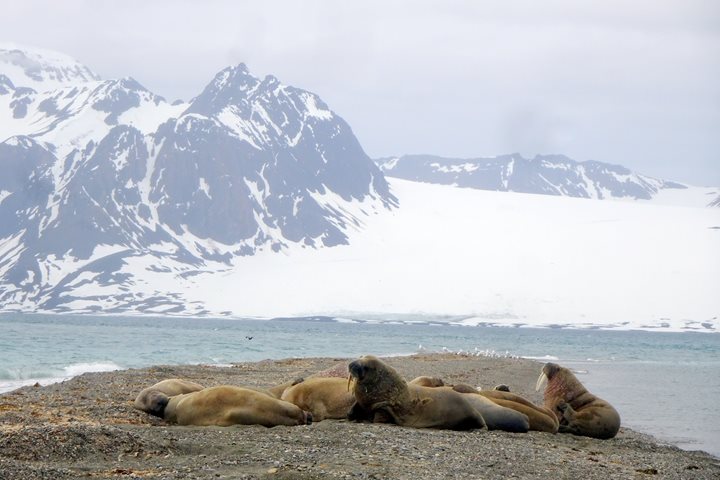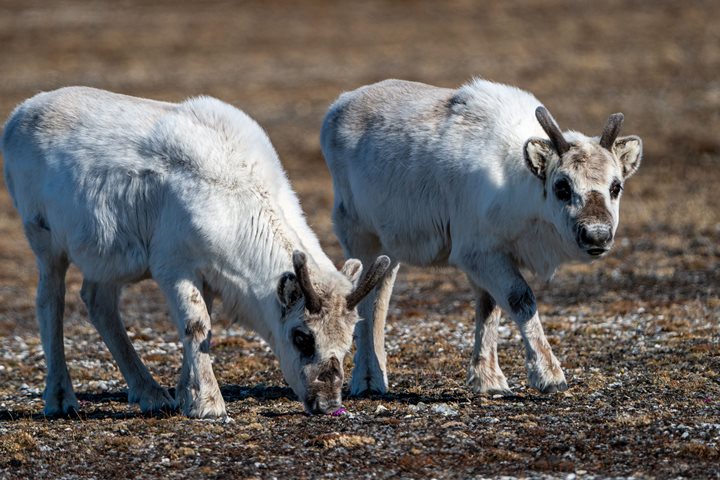There’s something to be said about waking to the all-night sun at 0500 casting light on the flows of pack ice scattering the sea around us and anticipating what the day and the Arctic has in store for us. Over the night we sailed into an area of Svalbard that few ships have been to this season. Thanks go to our captain and expedition leader reading the ice charts and taking advantage of recent openings in the sea ice. Their plan and timing paid off in spades for us as it would turn out.
The day was designed to be relatively freeform in order to take advantage of exploring areas of good ice that would harbor animals that depend on that ice, seals and polar bears mainly. The day proved to be very productive in terms of spotting and watching polar bears, too many to provide detail of every sighting. However, at least two separate events really stood out in the minds of many and certainly this author. First many of the naturalists on board have been thrilled to see that every bear we’ve encountered has looked, healthy, well-fed, and many of them in the act of consuming their prey on the ice.
Late in the morning as we approached a vast expanse of pack ice a call out from one of the naturalist that had spotted a bear off in the distance. As the Captain and Chief mate positioned our ship for a better look, another bear was sighted walking off at the twelve o’clock position. A few minutes later two more bears were seen which looked to be a mother and cub in the distance. There were many seals, mostly ringed seals (Pusa hispida), scattered on the ice, hauled out to bask and molt in the calm sunny conditions. In the distance there was at least one kill sight spotted with some remains and many birds scavenging on it, a good sign indeed. As we plied our way through the ice, three more bears were spotted on the starboard side of the ship. In total six bruins were about on the ice including a mother and her cub. Quite an incredible sight to behold, these animals making their living on the ice, both the bears and the seals, a true drama of Arctic life unfolding in front of us. Most touching were the mother and her yearling cub, her wanting to keep a good distance from the ship and the young bears curiosity drawing them closer, even stopping to pop up on its hind legs to get a better look. Arctic splendor.
One non-bear related destination was on the schedule and that was the breeding colony of Brünnich’s Guillemot at Alkefjellet (Auk Mountain) at Kapp Fanshawe. Towering cliff faces plunging down to the water’s edge teaming with nesting birds. As many as 100,000 Guillemot utilize this locale to nest and raise their young in the short but productive Arctic summer. As we drew nearer the rock faces, the water, and air around came to life. Thousands of birds airborne, thousands clung tight to the cliff ledges guarding their precious egg, and thousands in the water resting from feeding in the surrounding seas. It is truly one of the great spectacles of nature to visit a thriving seabird colony.
The remainder of the day was spent in search of wildlife and exploring the fjords. We did manage to get a very nice look at a male walrus hauled out on a flow. The bridge officers slowly maneuvered the ship in close without disturbing the animal from its icy resting place. Very early in the evening, just as folks were gathering in the lounge for cocktails and evening recap, Justin Hofman, our undersea specialist spied a bear in the middle of dense pack ice. Upon closer investigation we soon found that three bears where in the area. As we drew nearer ever so carefully it was apparent that one of the bears was eating a freshly killed seal while the other lay nearby pining for a taste. This sighting merited special attention and soon the announcement that evening recap would be cancelled came over the inside speakers of the ship. Within 15 minutes the bridge had the ship smack in the middle of the action. The much larger bear feasting on the kill continued to do so, while the smaller bear grew curious at our presence and began plotting a course ever so carefully over the pack ice to get a closer look at the massive “animal” drawing closer. It was hard to really pick which animal to watch but soon the curious bear had every ones attention as it came right up to the hull for a quick visit only to find the ice not strong enough to hold its weight and after a quick swim it managed to haul out and leap to more firm ice. Meanwhile the feasting bear proceeded to bury its kill in hopes to protect it as the other bear drew too close. Some posturing took place and our hungry bear made off to a safe distance to wait for the leftovers, if any, that remained. A day on the ice in the high Arctic.






